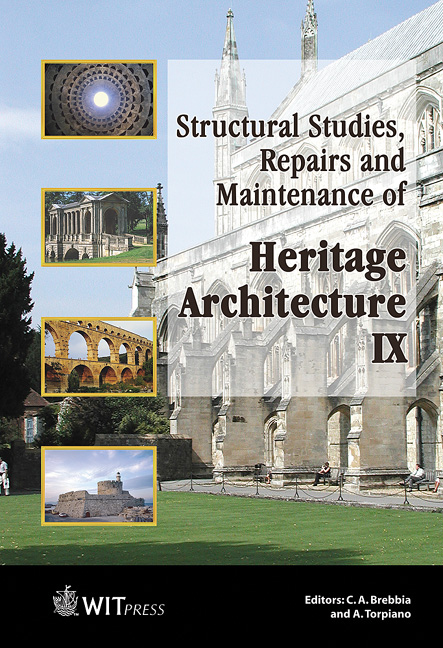A Programmed Maintenance Project For The Archaeological Area Of Paestum
Price
Free (open access)
Transaction
Volume
83
Pages
11
Published
2005
Size
991 kb
Paper DOI
10.2495/STR050491
Copyright
WIT Press
Author(s)
S. D’Agostino & M. Bellomo
Abstract
The ancient city of Paestum, founded by the Greeks in the 6th century BC, stands as one of the foremost records of the Greek civilisation that took root throughout Southern Italy. Its grandiose temples, in an excellent state of conservation, have been a constant source of inspiration for artists ranging from Piranesi to Schinkel over the last three centuries. The restoration of the temples, now completed after fifteen years’ painstaking work, was recently the subject of an international congress. However, as well as the temples, the archaeological area of Paestum, covering 25 hectares, features a number of other monuments, a series of Roman insulae and the ancient street layout. Moreover the ancient city walls, extending for 5 kilometres, have come down to us in excellent condition, with numerous towers and gates. This splendid archaeological park attracts some 800,000 visitors a year, and requires a determined effort for its upkeep. The adepts of the science of conservation are well aware that an efficient programmed maintenance is the key to conserving archaeological remains in the best possible state, for it reduces their vulnerability and postpones operations of restoration which are all too often invasive. It is thus of considerable importance to draw up a project of programmed maintenance for the whole area, in order to establish on a scientific basis the interventions to be carried out and a correct economic evaluation for the state of conservation. This research project will draw up guidelines for the process of programmed maintenance, establishing the type of inspection required for a proper diagnosis, any monitoring that may be needed for specific problems, the maintenance cycles for the various typologies of intervention, and the annual cost of all the various operations. This will ensure the best possible conservation of the archaeological area, the programming of the interventions on site, and definition of the precise cost of the types of maintenance. It will then also be possible to market a \“maintenance package” which, in view of the prestige of the temples, is likely to find enthusiastic sponsors.
Keywords




